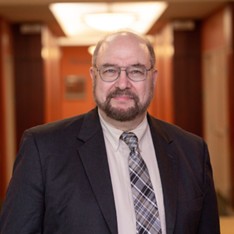HeterosKedasticity or HeterosCedasticity, That Is the Question

In 1985, Huston McCulloch, then at Boston College, said it should be spelled with a “k,” not with a “c.” He argued that the word should be spelled with a “k” because it is a borrow-word directly from Greek, not indirectly from Greek via Latin or French. Well, according to Alfredo R. Paloyo of the Ruhr-Universität Bochum, the “k” version overtook the “c'” version in 2001, and the “k” version of homosKedaticity is catching up to the “c” version.
Talk about impact!
So, what is heterosKedasticity? It refers to how asymmetric a statistical distribution is about its central tendency. Alternately, how skewed is the distribution.
We humans are attracted to each other based on symmetry. Except sometimes we find an asymmetric beauty mark attractive, as with Cindy Crawford, or an asymmetric smile, as with Elvis Presley. Symmetry or near symmetry is found in many places in nature. Snowflakes and plants are radically symmetric. The two major arms of the Milky Way seem roughly equal to each other. As does the neck and the tail of a brontosaurus.
According to the Central Limit Theorem, the distribution of averages of random variables approaches a normal distribution as the sample size gets large. So too with certain other functions of random variables such as totals and fractions. But, what can we say in general about functions of random variables?
According to a generalized central limit theorem, the distribution of functions of random variables approaches a hump-shaped or bell-shaped curve called a stable distribution, of which the normal distribution is a special case. These stable distributions are not necessarily symmetric about their central tendency, nor do their tails quickly fall to zero. They can be fat-tailed relative to a normal distribution, as well as unevenly-tailed.
With a normal distribution, almost all of the distribution occurs near the center, in terms of standard deviations. The probability of rare events goes quickly to zero. But, the real world is fat-tailed. Rare events occur relatively frequently.
Thus, every day, there’s a daily newspaper full of rare events. When was the last time you opened a daily newspaper and saw “Sorry, there’s no news to report today;” or, “this page left intentionally blank?”
(By the way, pages that have “this page left intentionally blank” printed on them are not intentionally blank.)
The movement of stock prices is fat-tailed. The profitability of business start-ups is fat-tailed. Bond defaults and corporate bankruptcies are fat-tailed. Sun flares are fat-tailed. Cancers and mutations are fat-tailed. The number of turtle hatchlings that make it to the sea is small, but among those who make it, some succeed spectacularly.
The original Central Limit Theorem deals with phenomena in which randomness averages out. But, there are many instances where outcomes are the result of the interactions of many hidden, small-scale processes. The original Central Limit Theorem you can think of as additive or linear. The generalized central limit theorem, as multiplicative or nonlinear.
The deviation of the real world from normal gives opportunity for improvement, if we are able to take advantage of positive deviations and minimize the harm of negative deviations. If we can do that, things don’t average out. Progress can come out of the filtering of randomness. Our worth, as individuals, comes not merely how we are similar to others, but to how we are different.
McCulloch was interested in the spelling of heterosKedasticity because he was studying whether real-world statistical distributions are sufficiently-well described as normal; or, whether heterosKedasticity (skewness) and kurtosis (fat-tailedness) should also be taken into account. At the time, I was his graduate assistant, testing his programming against various data sets.
He didn’t accept that the real world is normal. Nor should any of us accept that we are.










